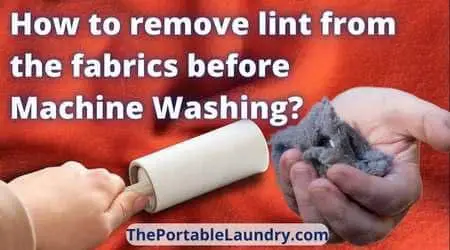Fabric pills or lint balls can be removed using lint-removing tools such as lint rollers or fabric shavers. Alternatively, you can use DIY home tools such as a razor or a trimmer.
Key Takeaways
- Fabric pills or lint balls can be removed using lint rollers, sweater combs, or fabric shavers.
- DIY hacks such as using a razor, velcro strips, or trimmer can also do the task but can be a risky option.
- Removing lint from fabrics that are prone to releasing lint before washing helps to protect other fabrics from attracting the same lint.
- Regularly removing lint before washing also protects your washer from clogging.
Fabric pilling is the accumulation of small lint balls on the surface of a fabric.
As fabrics age, they shred tiny fibers in the form of lint.
You may also be familiar with lint filters that are found in various washing machines.
Washing machines are equipped with different filters such as lint filters and drain filters depending on their model and type.
These filters are designed to catch lint, hair (human or pet hair), fabric threads, and similar tiny particles that shred the garments during the wash cycle.
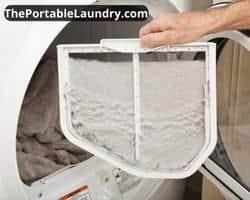
In this article, you will learn why you should remove fabric pilling before machine washing and how to remove it effectively using different methods.
Table of Contents
Why should you remove fabric pills before machine washing?
Removing the fabric pills or lint before washing can benefit you in many ways, especially when you use your washing machine to complete the laundry task.
By doing this, you can avoid clogging the drains and filters on your washing machine.
Furthermore, fabrics can be protected from linting or from accumulating lint that is released during the washing process. This further helps to maintain the performance of your washing machine.
Let’s take a closer look at the advantages of removing lint from your fabrics before washing them.
Prevents clogging
Over time, lint-releasing fabrics can cause a clog not only in the washing machine’s filter but also in the drainage system.
Therefore, removing the lint from the surface of the fabric before washing can reduce the chances of clogging.
It improves efficiency and prolongs the washer’s life
Proactively removing the lint before washing can help in maintaining the washing machine’s efficiency as the filter has to do less work.
What this also means is that you won’t have to clean the washer’s filter and the drain system frequently.
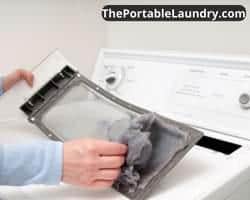
This avoids linting other garments during the wash
At times, you must have noticed that some of your garments come out linting or full of lint after the wash.
This could be a sign of a clogged filter in the washing machine.
And another factor that could contribute is linting fabric mixed with a load of your laundry during the wash.
In the laundry, fabrics are mainly categorized into two types, i.e. lint givers and lint takers.
Lint givers are the fabric types that release tiny fibers during a wash cycle, whereas the other types are categorized as lint takers that attract those tiny fibers.
Hence, removing lint from the fabrics before washing can prevent other fabrics from attracting lint during the wash.
How do you remove fabric pills before washing?
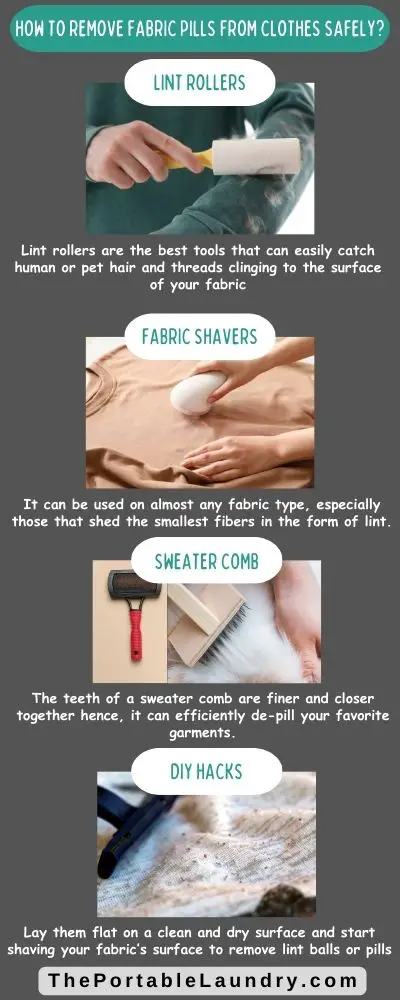
To remove fabric pills from their surface, you can make use of specific tools designed for this task.
Let us discuss some of the tools or methods to remove fabric pills.
Lint Rollers
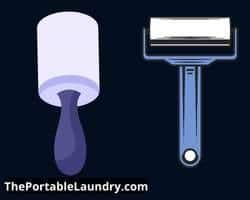
Lint rollers come in different styles, one with a handle at the side and the other with a handle at the center.
Lint rollers are the best tools that can easily catch human or pet hair and threads clinging to the surface of your fabric.
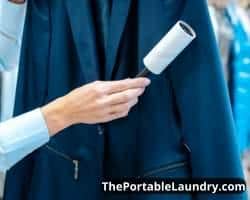
They are easy to use and are quite effective in attracting lint and hair from the surface of the fabric.
You simply need to roll the lint roller over the surface of your garment by holding its handle.
To use a lint roller on clothes, you can either lay them on a flat surface and run the roller over your clothes or use the roller on the clothes while you are wearing them.
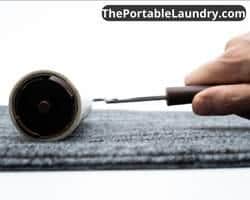
Fabric Shavers
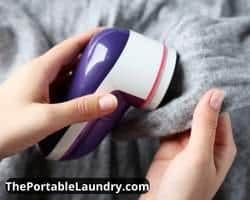
Fabric shavers are another useful tool that can be used on almost any fabric type, especially those that shed the smallest fibers in the form of lint.
Fabric shavers are suitable for daily wear, woolen coats, gloves, undergarments, socks, couches, sofas, plush toys, blankets, scarves, quilt covers, home or car seat cushions, and other lint-releasing fabrics.
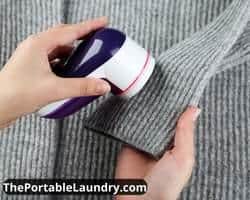
It is also known as a “lint remover” or “sweater defuzzer”.
Some fabric shavers also include spin speed settings and replaceable stainless steel blades. You can find one that operates using rechargeable batteries.
Note: These tools are only to be used on fabrics that are not delicate. It may not be suitable to run them over expensive fabrics such as silk.
Sweater Combs
When compared to a regular comb, the teeth of a sweater comb are finer and closer together.
These special fine-tooth combs are designed to efficiently de-pill your favorite garments.
Simply, Stretch the cloth tight and use it as a scraper on the affected areas.
DIY hacks to remove fabric pilling
If you don’t have access to lint-removing tools, then you can make use of a razor or a trimmer as a DIY lint-removing hack.
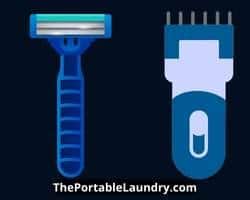
To remove lint balls or pills from the fabrics, simply lay them flat on a clean and dry surface and start shaving your fabric’s surface.
Make sure to use these tools gently to avoid any wear and tear on your fabric’s surface and its edges.
Alternatively, you may also use a velcro strip to get rid of the pilling, but it’s not recommended as it may pull out the threading if not done the right way.
How to know if a fabric is a lint giver or a lint taker?
Fabrics that shed tiny fibers during a wash cycle are lint givers, while fabrics that attract these fibers are lint takers.
Before washing, check the fabric’s care label to understand its shedding characteristics.
Here are some of the common examples of lint giver and lint taker fabrics.
Lint Giver Fabrics
Lint is commonly found on and around clothing made from materials with short fibers that can become dislodged during wear and washing, examples of lint giver fabrics include:
- Cotton: Cotton fabrics, due to their short fibers, are prone to shedding lint during washing and wear.
- Wool: Wool garments can shed small fibers, contributing to lint buildup over time.
- Linen: Linen fibers are short and can also detach, leading to lint accumulation.
- Fleece: Fleece materials often shed small fibers, resulting in lint on other clothing items.
Lint Taker Fabrics
Lint taker fabrics are those that tend to accumulate lint from other sources.
They have surfaces that attract and retain lint. Examples of lint taker fabrics include:
- Corduroy: The textured surface of corduroy tends to attract and retain lint from other fabrics.
- Synthetics: Synthetic fabrics, such as polyester or nylon, can generate static electricity, causing them to attract lint.
- Velvet: The soft and plush texture of velvet can easily accumulate lint from other garments.
- Chenille: Chenille fabrics have a velvety appearance and can also attract and hold lint.
Final Thoughts
Removing lint from lint-releasing fabrics before washing can benefit your washing machine as well as the other fabrics in many ways.
It not only prevents clogging of the washing machine’s filter but also prevents the other fabrics from attracting lint.
You can select a lint remover from a variety of options and use it according to the directions on the package.
The DIY hacks mentioned above are another effective method for removing fabric pills.
Just make sure that you are using the DIY techniques carefully and gently to avoid any damage to your fabric.
Frequently Asked Questions
What is the fastest way to remove pilling from clothes?
Most fabrics can be de-pilled with ease by using a fabric shaver. It is the most effective tool for the job. With that said, sandpaper sponges and Velcro strips work equally well.
Can you remove the pilling with a razor?
Yes, you can use a razor to remove fabric pilling if you don’t have a fabric shaver at home. A simple disposable razor should do the trick. However, be careful while pilling the fabric using a razor, as there are high chances that you may end up tearing the fabric if not done correctly.
Why does fabric pilling happen?
Piling is mainly caused by rubbing, which occurs when clothes are worn or washed.
Do fabric shavers ruin clothes?
Fabric shavers are considered safe for most fabrics, so they do not ruin the clothes. Having said that, you should avoid using fabric shavers on delicate clothes like silk.
Does pilling eventually stop?
Pilling generally goes away once the excess loose fibers are eliminated.
Are fabric shavers safe for woolen garments?
Fabric shavers are generally safe for woolen garments. However, use them gently and test on a small, inconspicuous area before using on the entire garment to ensure it doesn’t cause any damage.
What’s the best way to remove pilling from synthetic fabrics?
For synthetic fabrics, using a lint roller or fabric shaver on a gentle setting should work well. Always follow the manufacturer’s care instructions for the fabric.
How often should I remove fabric pills from my clothes?
Regular fabric pill removal is recommended before each machine wash, especially for lint-releasing fabrics. This helps prevent clogging of the washing machine and maintains fabric quality.
Can I use a fabric shaver on plush toys and blankets?
Yes, fabric shavers can be used on plush toys and blankets. However, use a gentle setting and test on a small area to avoid damaging the fabric.
Are there any eco-friendly alternatives for fabric pill removal?
For eco-conscious consumers, consider using a sustainable fabric comb made from natural materials. These combs can be effective in removing pills without relying on disposable tools.
You May Also Like
- Should You Wash Spot Clean Only Fabrics Or Clothes? (Explained)
- How to Wash Tie Dye Without Bleeding? (Safe & Effective)
- 10 Laundry Drying Hacks Everyone Should Know (Clever Ways)
- What is a FoldiMate in Laundry? (Benefits & Drawbacks)
- Difference Between Laundry Sink And Utility Sink (Explained)
- Laundromats OR Home Laundry? (Which is Cheaper?)
- Can Upholstery Fabric Be Washed In Washing Machine?
- How do you wash LulaRoe jeans? (5 Methods Covered)
- Can Minnetonka Moccasins be washed in the washing machine?
- How To Wash A School Bag? (ULTIMATE GUIDE)
- Ultimate Guide to Wash Swimsuits (Wash Swim Wear)
